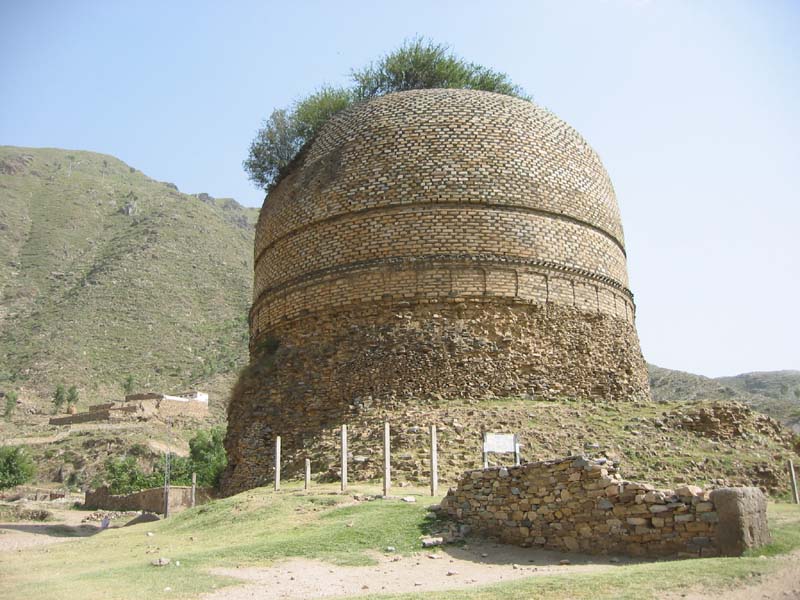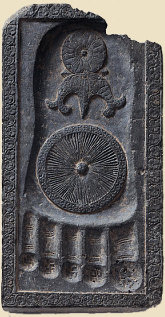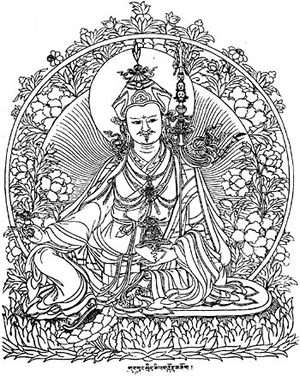Researcher makes
progress in determining Guru Rinpoche's birthplace
2 May, 2010 - The timing was not intended but, even as Lyonchhoen
Jigmi Y Thinley and the Pakistani prime minister, Syed Yousuf
Raza Gilani, discuss promoting friendship through exploring the
birthplace of Guru Padmasambhava in Swat province, Pakistan, to
draw Buddhist pilgrims, a study claims that two lakes were identified
as lake Dhanakosha, the birth place of Guru Rinpoche.
Buddhist legend and scriptures have it that Guru Rinpoche was
born from a lotus flower in lake Dhanakosha in the 8th century.
It is also believed that the lake is in the valley of Uddiyana,
a kingdom in the west or northwest of India. Western scholars
have identified it with the valley of Swat, in present-day northwestern
Kashmir, in Pakistan.
The researcher, Rauf Azad Kakepoto, a PhD student of Shah Abdul
Latif university told Kuensel that, out of 52 lakes in the area,
two lakes have been selected to compare with archaeological and
textual material to identify lake Dhanakosha. Rauf Azad Kakepoto
had been carrying out a research programme on an archaeological
study on Uddiyana with reference to the lake Dhanakosha.
According to the Mahaparinirvana sutra, when the Buddha was about
to pass away at Kushinagara in India, he said, "Impermanence
is the nature of all created phenomenon. Death being inevitable,
the time for my passing into Nirvana has arrived. Of this you
should not grieve. I will be reborn from a lotus lake Dhanakosha,
in Uddiyana, and will be known as Guru Padmasambhava."
Uddiyana in Sanskrit means Orgyen in Tibetan and this place is
also believed to be the homeland of the great Buddhist masters,
such as Garab Dorji, Vairotsana and Tilopa.
The first four lines of `the Seven Line Prayer' to Padmasambhava
recited by all Buddhist say:
In the north-west of the land of Orgyen, In the heart of a lotus
flower, Endowed with the most marvellous attainments, You are
renowned as the Lotus-born, According to Guru Padmasambhava's
biography, Padmasambhava was incarnated as an eight-year-old child
appearing in a lotus blossom floating in the lake Dhanakosha in
the kingdom of Uddiyana.
In an email interview, Rauf said the lakes are on the verge of
disappearing, due to Taliban's occupation in Swat province. His
findings say that Pakistan remained the home for Buddhist heritage
since 3rd c. B.C. to 8th c. A.D. The Ashoka stupas, Buddhist monasteries
and Buddhist stone inscriptions prove these.

The other findings include ruined pottery, art works and ancient
footpaths of Swat dwellers that led to Tibet and other Himalayan
countries.
His study is to highlight the significance of the Swat heritage
in general and, in particular, Guru Padmasambhava. "The focus
is to revive the sacred place for Buddhist pilgrims, who have
spiritual affiliation with the sites in Swat province," said
Rauf.
Rauf's two-year research programme mostly deals with cross checking
the Buddhist legends with archeological findings. "Lake Dhanakosha,
palaces and monasteries associated with Guru Padmasambhava needed
verification, through both scholar's micro level study and Buddhist
legends."
According to the researcher, an Italian researcher Giuseppe Tucci
had reported the ceramics found in the royal tombs of Leh (Ladakh)
in India, stand as a clear relation with others facts and evidences
that were found in Swat.
He said that, for concrete findings, the research requires more
authentic references of the ancient text to relocate the lake
Dhanakosha and the other sites through exploring relevant archaeological
materials.
"Once the project is complete, it will not only attract Buddhist
pilgrims, but also help benefit to introduce the heritage of 8th
century, to set chronology of the area with reference to Guru,
who benefited through his teachings and practices," said
Rauf. "The research could also benefit the nation, to add
an important chapter to introduce the ancient Uddiyan history
in school curriculum of Pakistan."

Further it is also expected to boost tourism industry and help
reduce poverty of the locality. This, he said, could be possible
once the sites are revived, preserved and protected. "It
could help establish links with people around the world, so as
to bring peace and harmony through incorporating Buddhist concepts
and values," said Rauf.

Guru Padmasambhava is also known as Guru Rinpoche, the `Precious
Master'. He discovered the supreme teachings of the true nature
and enlightenment, bringing great benefits to sentient beings.
This is why Guru Rinpoche is called the Buddha of the Vajrayana.
By Tenzin Namgyel
http://www.kuenselonline.com/modules.php?name=News&file=article&sid=15340